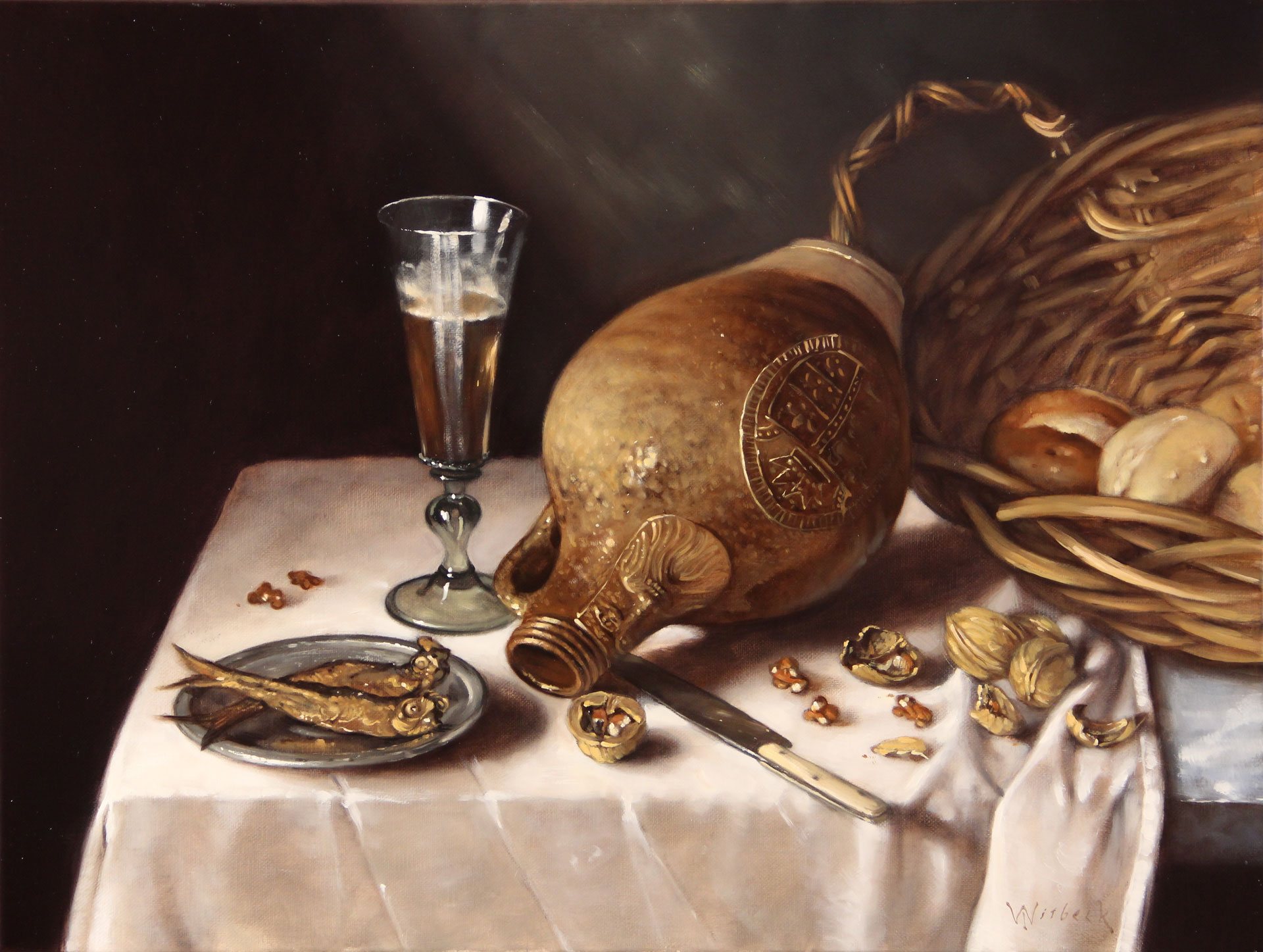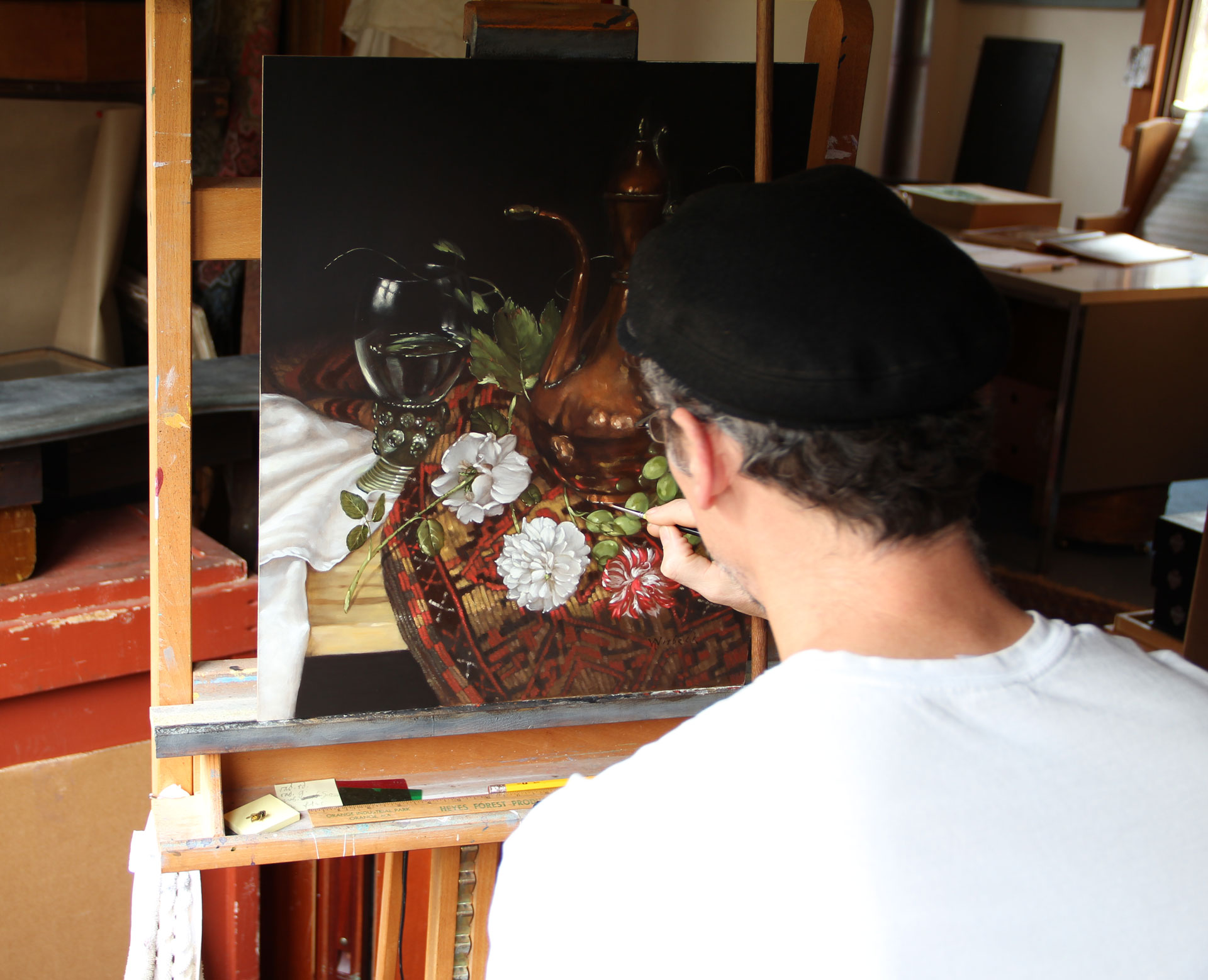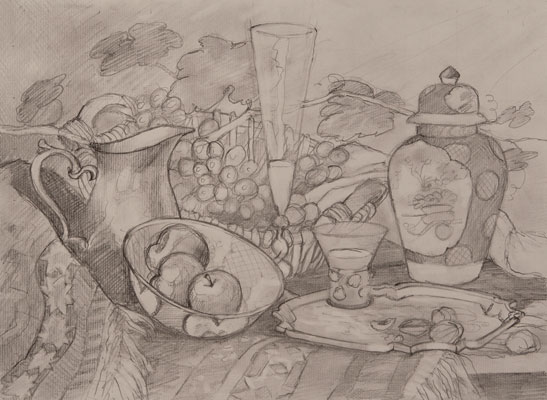WHITBECK NOTES
Winter 2016
_________________________________________________
There has been a new addition to my website with information on the process of having a commission done. As I have been receiving inquiries as to how one goes about this, I have decided to put up a detailed description of how you go about it, and what you can expect. It is a rather easy-going process where you can be involved as much or as little as you wish, with the final outcome a finished, framed painting, shipped right to your home. Click here for a link to the Commissions page of my website.
With the art show season over, and now being able to spend full time in the studio, winter is the best time to have a commission worked on. Averaging about one month from start to finish. Upon request, more information can be sent.
_____________________________________________________________________
Be sure to take a look at my website below to view the latest paintings.
All my best,
James Whitbeck
413.695.3937

Figs and Grapes Still Life
30" x 40" oil on canvas
Welcome to the 2016 Winter Whitbeck Notes
Why do art forgers only go after painters from the 20th century? Why do they only try and forge work from this period? Not to say that forgeries of Renaissance and Baroque art have not been attempted, but out of all the forgers that I have come across in reading, watching documentaries, etc., only a few times have I seen anyone tackle the complex technique of the Dutch masters, and miserably so I might add.
There was Hans van Meegeren, the well known Dutch forger from the 40's, and he, smartly, only went after Vermeer's early style, trying to fill a time in Vermeer's career when his technique was quite different from his later, mature style. The earlier Vermeer being somewhat looser and easier for an imitator to copy. There was the Englishman, John Myatt, who attempted Vermeer's Girl with the Pearl Earring, which was, predictably, lacking of any technique from the period and, even though it was an image of a girl wearing a pearl earring, had nothing of the essence of the original.
One of the more recent forgers I have come across was a man by the name of Mark Landis, who, when reproducing more modern pieces, comes out high on top of the quality-list. But when it comes to his version of the Mona Lisa, well, it looks very much like a paint-by-numbers! Or at least a very accomplished one, anyway.
The latest was a documentary I had seen on a German art forger from the 80's and 90's named Wolfgang Beltracchi, and, once again, there were no old masters to be seen. There was a line from him in the documentary that just riled me up. Someone was asking him about the different artist's he thought that he could forge, and his answer when the name of Rembrandt came up was an arrogant, "Of course.", and when Vermeer was mentioned, the same response. So casual, so nonchalant. But in searching and searching, nothing was to be found showing that he had attempted such a skilled undertaking! I did come across what looked like a 16th century 3/4 portrait of a woman in yellow with a small dog in her lap, which had no resemblance at all to paintings of that period.
It seems to me, that when approaching any painter who had not only an artistic eye, but also a knowledge of technique, and used it well, that all of these art forgers fell far short of anything resembling the old masters. Maybe it was more lucrative and efficient to work from a style that was quicker and easier to produce, one that was not so labor intensive and involved less effort to master the skill that was being used by that particular artist. But I doubt this. A newly discovered Rembrandt! That would make for a very financially ok art forger, I think! They just would not be able to pull it off, and they knew it.
I say these things because I had realized early on in my career that in order to create paintings in the manor of the artists that I loved and admired so much, not only must I learn how to mix and apply paint to canvas, but I must also learn their technique. I had to learn the way in which they were applying their paint, from start to finish. And, even after 10 or so years of diligent study and practice, I can happily say that I am still learning. Every time I approach a Pieter Claesz still life, I am taking it all in, seeing it in a different way each time, depending on what I need to better at the time. Coupled with the quiet of the museum, these moments are exciting and exhilarating. And even though Claesz has been gone for 300 plus years, I feel as if he is right there, guiding me along, and showing me exactly what I need to see. Think of this as corny or what you will, but it is what it is, and this approach has been a way of learning for me for some time, and has proven to be pure gold. That one brush stroke is loaded with so much knowledge on how a lemon highlight was done. And the hair's of that rabbit? Individually done? Was there the use of a fan brush? Maybe a stiffer bristled, hoghair brush? Well! Let me just get a little bit closer, and there are discoveries to be made!
Short of hand plaining my own panels and grinding all of my own paints (which I would actually love to do!), I am finding that using the same painting practices of the period puts my paintings closer to the originals then most, and that that "thing" that makes old Dutch still life so appealing has become much closer and more visible over the years.
I also believe that in order to come closest to the feel of the old masters, not only is the right technique needed, but also the right frame of mind. And in this idea I mean a knowledge of the times,the history of the period. It has to be more then just an image. You can dress someone up in 16th century clothing, accurate right down to the number of linen stitches per inch, have them recite a line or two from Shakespeare, all situated in the Globe Theatre in London. But if not delivered correctly, not delivered with the spirit, knowledge, and energy of Elizabethan England, with all of its smells, sounds and sights, then I think you might find the performance somewhat flat, hollow, maybe. It looks correct, but something just is not quite right. There is a thought here that I am trying to get out. An idea that, I think, has truth in it and is worth putting forward, but is sometimes difficult to convey. I do think that this image helps, and that you can connect it to the way in which I would like you to view my paintings. They are more then just a pretty image to be hung on the wall. Within them are also the years of study, the passion for the history and life of the little republic which had produced so much creative energy, the million and one stories of trade, travel, science and everyday life, the clothing, the food, the people and, like a spiders web, all of its strands that connect to such far fetched places with their stories as well. It is all in there. And for those who have been reading Whitbeck Notes from the beginning, you already have a glimpse of these stories and this idea that I am writing about.
So, as for the art forgers, I think that the old masters is, for them, a tree that they are just not equipped to climb!
Click here for a link to a good article on art forgery that I had recently come across.

Herring and Beer
18" x 24" oil on canvas









Mediterranean Bounty
16" x 20" oil on canvas
